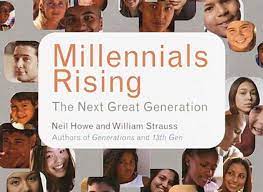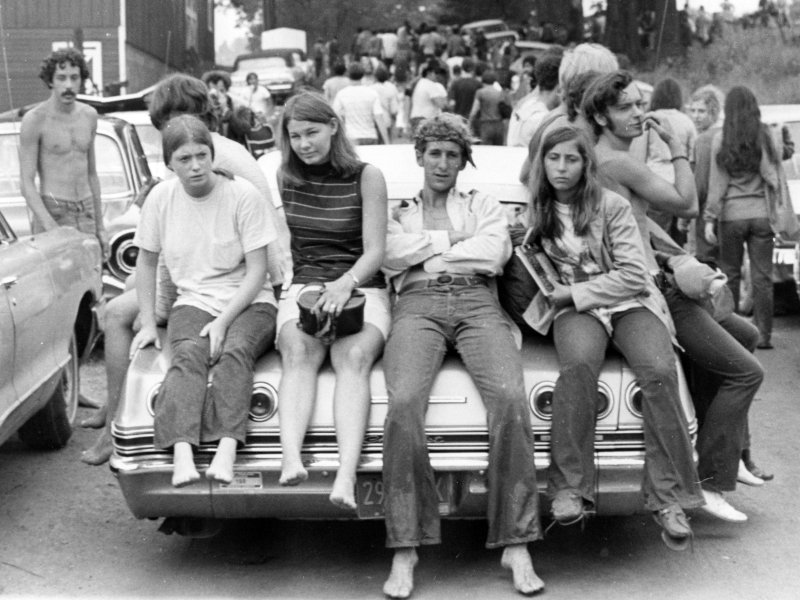New music sucks. The experts agree.
- Legendary programmer Guy Zapoleon, inventor of CHR’s Music Cycle, said it’s the worst doldrums he’s ever seen.
- Coleman Insights’ Contemporary Music Superstudy found that North America’s favorite songs in 2021 were mostly the same songs they loved most in 2020.
- Luminate, purveyors of BDS radio, observed that on-demand streaming audio users are spending less time with new songs and more time with the same old songs.
Has western civilization finally decided we’ve written every song worth singing?
I personally love a lot of music I’m way too young to know, much less enjoy. I’ve also mercifully avoided the trap of many music fans in the dad rock demographic of hating my kid’s music.
When your Billie could be Holiday or Eilish, you notice patterns.
Here’s why today’s slump in new music is not only totally predictable, but also totally temporary.
1) Millennials are too old, while Gen Z is still too young, to influence new music trends
First, let’s clear up some oft misquoted generational nomenclature.
- Those 20-somethings some folks call Generation Z are in fact last-wave Millennials. According to Neil Howe, whose seminal works on generational theory coined the term “Millennial”, Millennials are now 18- to 40-years old.
- The next generation—Gen Z—is now 17 and younger. The youngest Millennials are in college. The oldest Gen Zers are in high school. (Don’t argue with me; argue with Neil).

Historically, when the split between an older and younger generation is between ages 16 and 21, new music really sucks.
- Remember the early 80s, when Christopher Cross and Urban Cowboys passed for Top 40’s biggest hits before MTV brought New Wave into our lives? That period was when the oldest Boomers were in college and the youngest Xers were still in high school. In just a couple of years, as the Xers gained enough influence over which songs became popular, CHR entered a golden age with Michael Jackson, Prince, Madonna, Duran Duran, and all those British new Romantics.
- Fast forward to 2000 and the groundbreaking Grunge and Alternative Rock of a decade prior had devolved into Vertical Horizon’s “Everything You Want” and Matchbox twenty’s “Bent”. Shortly thereafter, however, Millennials would transform Generation X’s dark alternative into My Chem emo and Hip Hop (Gen X’s other musical creation) from songs of grim reality to anthems of club nirvana.
- Then there was the early 1960s, after Rock ‘n’ Roll’s original heroes died, but before the Beatles invaded. That era of novelty songs, cheesy dances, and death discs happened while the Silent Generation of Elvis had left the malt shop for work, while the Woodstock Boomers were still in middle school.
We’re now exactly where we were during those times, except now it’s the aging Millennials ceding control of popular music, while Gen Z prepares to change the direction of music tastes. As I noted in How The Homelanders Will Soon Change Popular Music we can expect the extroverted, community-oriented party of the 2010’s biggest EDM-fueled hits to give way to quieter, more introspective, yet inclusive styles of music.
While we’ve already heard examples of hits that have these attributes, don’t expect a wholesale mainstream new music evolution until today’s high school seniors turn 21 in 2026—give or take a year or two.
2) Teenagers enjoying older music is not abnormal
Many music pundits observe that today’s teenagers, who now enjoy unprecedented access to the full history of recorded music, are routinely embracing songs decades older than they are.
There’s Kate Bush and Stranger Things.
There’s that TikTok Skateboard dude who brought back Fleetwood Mac’s Dreams.
My own teenager was recently listening to Sly and the Family Stone’s “Everyday People.” “Everyone knows this song, dad,” I was sarcastically informed when asked how they knew a song that was already an oldie when I was a teen.
Some cite this strong interest in older songs as a sign new music just doesn’t cut it.
The thing is, today’s teens aren’t actually that unusual for enjoying older generation’s music.
In the 2000s as the iPod was the hottest way to enjoy one’s music collection, a study found then-millennial teenagers’ iPod collections overlapped with their parents’ tunes by 40%.
Many of my fellow Xers spent the late 80s with Pink Floyd, Led Zeppelin, Rush, The Doors and other pantheons of Classic Rock.
So, if Gen Z, Millennials, and Gen Xers all listen to the music of older generations, where did this notion that young people only listen to new music materialize?
Boomers.

The generation that spawned Beatlemania, went to Woodstock, and fueled Studio 54 is the generation famous for not trusting anyone over 30. Do you think they’d be caught dead listening to the squares’ Big Bands and Standards?
Surely there was some teenager in 1966 who loved Jerry Vale, but he kept that dark secret.
The same was not true of their older brothers and sisters. Those Silent Generation teens who made superstars of Elvis, Fats Domino, and The Platters were often buying records that were remakes of 30-year-old songs.
Ironically, the boomers who wouldn’t be caught dead listening to “old” music are—as elders—listening with fresh ears to their parents’ music.
Speaking of Boomers…
3) New music’s most vocal critics simply aren’t in the demo.
“The thing I just don’t like about Rock ‘n’ Roll is the drums,” my grandfather told me back in the 80s. “All I can hear when I hear it is boom boom boom boom.”
A WWII veteran, he spent his formative years with the Big Band and melodic standards of the 1930s and 1940s. He didn’t begrudge his baby boomer kids’ love of rock ‘n’ roll. He just knew it wasn’t for him.
Now those boomers, raised on 60s Oldies and 70s Classic Rock, are the grandfathers. And frankly, some need to extend the same courtesy and awareness to younger generations as my grandfather extended them.
The fact is, most new music is for 17-year-olds, not 57-year-olds.
There’s plenty of exciting new music in 2022. However, it’s impacting among youth subcultures outside the mainstream that middle-aged music fans wouldn’t notice.
Meanwhile, those same teenagers discovering Kate Bush and Queen also enjoy Kendrick Lamar, Joji, Bad Bunny, and Harry Styles (except my kid, who hates Harry Styles.)
How should you program until new music rebounds?
If you’re responsible for a contemporary station, it’s likely little comfort that renewed excitement for new music is only a few years away. In the meantime, here are four tips to maximize your audience during the slump:
1) Keep a healthy diet of conservative consensus hits on your playlist. These songs may induce cringe in future years, but now represent the best way to satisfy a broad audience’s appetite for current music. However, understand that exclusively focusing on those adult-friendly pop titles can destroy your station’s relevance tomorrow
2) Add a few carefully selected “out there” songs for spice that might alienate older listeners. Be on the lookout for songs that garner significant streaming among young people, especially among youth subcultures. These songs are “image” songs. Play them not for their widespread appeal, but instead to position your station as culturally relevant and give your station the cache to pivot when popular music evolves. While you should give significant exposure to these image titles, only one or two such songs should be on your playlist at any given time.
3) Keep culturally relevant musically, even if it’s confusing. When a song becomes a cultural touchpoint, such as “We Don’t Talk About Bruno” or “Running Up That Hill,” embrace that moment immediately. Instruct airstaff to explain why these songs are having a cultural moment for those listeners too busy to notice cultural trends. Do not expect these songs to follow the traditional arc of song development seen in callout research—by that time their cultural relevance is over. Finally, don’t expect these songs to sound like the rest of your playlist.
4) Keep your ears open for what’s next. Tomorrow’s trends in hit music always trace their roots back to underground music among youth subcultures. Those uncool goth kids in the 80s gave us alternative in the 90s. Those 00s kids who were into Skrillix and DeadMau5 spawned the EDM-infused pop hits of the 10s. Indie artists such as Mitski or Caveman or comedy YouTubers such as Danny Gonzalez may or may not signal what’s next, but they do have rabid Gen Z fans today. While it’s too early to base your station’s playlist on these youth trends, understanding them today will prepare you to pivot your station when the next evolution in new music goes mainstream.


Matt, Thank you for a hopeful, insightful article as ALWAYS reviewing the generational impact on music as well as your recommendations. Fascinating that you see it as 2026 for the next “Rebirth’ for a healthy crop of new music and a healthy CHR. This being the worst Doldrums of all time that would make it the longest Doldrums ever at 6 years(Vs 2-3) which makes sense. By the way what your Dad said about the boom boom boom of Rock music, my WWII veteran Dad felt the same way but still eventually encouraged me to pursue my passion. A future business partner told me that the beat of music each generation here in the U.S. grew faster over time and that indicating the pace of their culture, their lifestyle as well as the changes in our culture . In the early1800s the Waltz was 3/4 time, Early 1900s it sped up for Square Dancing with 4 beats, 1920s Swing Dancing was 4 beats per measure with a faster tempo of 35 – 46 bpm, Early Rock & Roll dancing was 6 beats per minute, New Wave was 130-150 beats per minute etc. This observation was originally from Charles Manson
Matt, Thank you for a hopeful, insightful article as ALWAYS reviewing the generational impact on music as well as your recommendations. Fascinating that you see it as 2026 for the next “Rebirth’ for a healthy crop of new music and a healthy CHR. This being the worst Doldrums of all time that would make it the longest Doldrums ever at 6 years(Vs 2-3) which makes sense. By the way what your Dad said about the boom boom boom of Rock music, my WWII veteran Dad felt the same way but still eventually encouraged me to pursue my passion. A future business partner told me that the beat of music each generation here in the U.S. grew faster over time and that indicating the pace of their culture, their lifestyle as well as the changes in our culture . In the early1800s the Waltz was 3/4 time, Early 1900s it sped up for Square Dancing with 4 beats, 1920s Swing Dancing was 4 beats per measure with a faster tempo of 35 – 46 bpm, Early Rock & Roll dancing was 6 beats per minute, New Wave was 130-150 beats per minute etc. This observation was originally from Charles Manson :-0
Pingback: Why Music Won’t Suck Forever – The Bill Gay Show
Pingback: Yvonne Malak: Konzentration und Fokus - radioWOCHE
Pingback: Yvonne Malak: Musik-Zyklen akzeptieren - radioWOCHE
Pingback: Musik-Zyklen akzeptieren | my radio